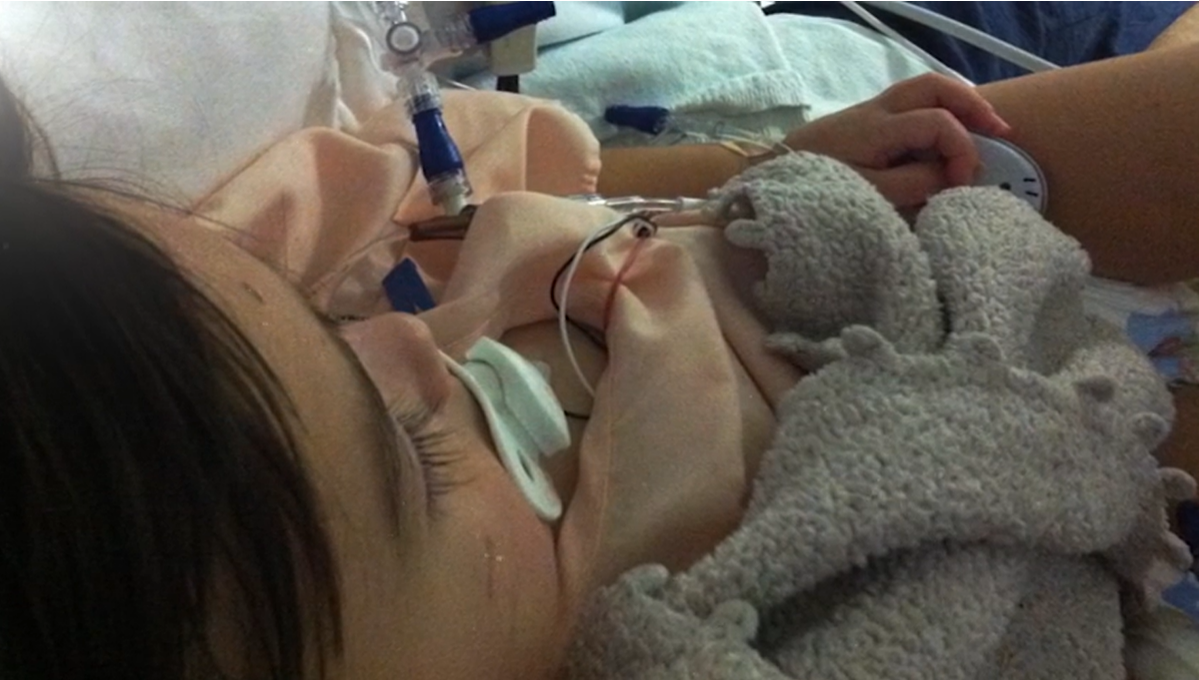
If weight loss with drugs that must be self-injected weekly doesn’t sound appealing — think Ozempic, Wegovy and Zepbound — there may be an intriguing new option available down the road.
It's “the world’s first and only swallowable, procedure-less gastric balloon for weight loss” and requires no surgery, endoscopy or anesthesia, according to Allurion Technologies, the Massachusetts company that makes it.
Three other gastric balloons currently have approval from the U.S. Food and Drug administration, but they require sedation and endoscopy for either placement or removal or both, Dr. Shelby Sullivan, an obesity medicine specialist and director of the gastroenterology metabolic and bariatric program at the University of Colorado, tells TODAY.com.
Sullivan is leading a clinical trial, sponsored by Allurion Technologies, designed to support approval for the balloon from the FDA. The company says it expects to have results by the end of 2024 and will begin the process of submitting its application to the FDA.
Get South Florida local news, weather forecasts and entertainment stories to your inbox. Sign up for NBC South Florida newsletters.
What is the Allurion ballon?
The Allurion gastric balloon is a balloon you swallow in capsule form, which a health care provider then fills with saline solution to take up space in your stomach and make you feel full. After four months, the balloon deflates and leaves your body in a bowel movement.
It’s not yet approved in the U.S. but already used in more than 70 other countries, including Canada, Mexico and Europe.
Health
Patients lose about 10% to 15% of their total body weight, according to Allurion. In comparison, medications like Wegovy and Zepbound help people lose 15% to 20% of their body weight, according to their respective manufacturers, Novo Nordisk and Eli Lilly.
The balloon is an alternative for people with obesity who don’t want bariatric surgery or weight-loss drugs — whether due to cost or fear of permanent body changes, Sullivan says.
“A lot of people don’t like taking medication — they don’t want to take medication. They want to lose weight so they can get off medication,” she explains. “Patients see (the balloon) as, ‘I’m just getting some help, but it’s not a medication that I have to stay on forever.’”
How do you swallow an Allurion balloon?
A patient swallows the capsule, which contains the balloon and an attached catheter, in a doctor’s office.
More than 99% of patients are able to swallow it, according to the company, but if someone is having trouble, Sullivan says she can use a medical instrument to quickly push it down into their stomach.
Fluid is then hooked up to the end of the catheter sticking out of the patient’s mouth and the balloon is filled with about 18 fluid ounces of saline, Sullivan notes.

When X-rays confirm the balloon is fully dilated, the catheter is detached and “the patient is on their merry way,” she says.
The outpatient visit takes about 15 minutes, according to Allurion.
After four months, the balloon opens, releases the fluid, deflates and leaves the body in stool.
What are the side effects?
They include nausea, vomiting and abdominal pain as the stomach is getting used to having the balloon in place, Sullivan says. Those symptoms usually resolve within the first three to seven days.
Patients are initially put on a liquid diet, after which they transition to a pureed and soft food diet, and start eating normally after seven to 14 days, she adds.
Another side effect is that the stomach wall gets thicker in response to the weight of the balloon, but returns to normal about a month after the balloon is removed, Sullivan says.
How does the Allurion balloon work?
It works in two ways, Sullivan says: It takes up space in the stomach, so it makes the patient feel full for longer. It also delays gastric emptying so food stays in the stomach longer, increasing satiety.
But some experts are skeptical whether that will lead to lasting weight loss.
The concept of swallowable, procedure-less technology is “amazing,” but gastric balloons in general serve a very limited purpose, says Dr. Shauna Levy, a specialist in obesity medicine and medical director of the Tulane Bariatric and Weight Loss Center in New Orleans.
“For a long-term weight loss solution, I do not think balloons are the answer,” Levy tells TODAY.com.
“Obesity is hormonally driven, and these are space-occupying balloons. They allow you to get more full quickly, but they don’t really target your hormones. … Understanding the physiology of obesity, it seems to guarantee that the weight is going to come back” once the balloon is gone, Levy says.
Long-term results will be such an important consideration since the balloon is deployed very short-term, says Dr. William Yancy, medical director of the Duke Lifestyle and Weight Management Center in Durham, North Carolina.
Still, there's a continued need for additional options to help people with obesity lose weight because not all patients can tolerate weight-loss drugs, afford them or find a pharmacy with a supply, he adds.
"The balloon actually shares an attribute of these medications — feeling full sooner," Yancy tells TODAY.com.
The fact that no procedures are required to place or remove the balloon "is an advance in making it accessible and likely more affordable," he adds.
"Issues with this method will still regard tolerance and long-term efficacy — we’ll have to see when it’s used more broadly," Yancy says.
According to Allurion, only 1-3% of those who use the balloon aren't able to tolerate it and have to have it removed early via endoscopy, and on average, people sustain 96% of their weight loss one year after the balloon passes. The balloon comes with a “behavior change program” that includes nutritional coaching to create healthier habits, it notes.
There is also no limit on the number of times the Allurion balloon can be repeated, the company says.
Sullivan says in her experience, when the balloon comes out, patients don’t feel hungrier than they did when the balloon was in, possibly because it may alter the stomach’s production of ghrelin, the hunger hormone, in a lasting way.
But there’s no long-term data on balloons’ weight-loss potential, Levy cautions. Bariatric surgery is the most durable option, and weight-loss drugs will also have better long-term results than balloons as long as people keep taking the medications, she adds.
Gastric balloons are often a "gateway procedure" to bariatric surgery, Levy says, but she's concerned a balloon could cause scarring in the stomach that could potentially make a future surgery more challenging.
Allurion counters the balloon is made from a thin, smooth polyurethane film designed to be gentle on the stomach lining. There’s never been a case of stomach scarring that made a future bariatric surgery more difficult, according to data from the 130,000 patients the company has treated, it adds.
What is the Allurion balloon price?
Costs vary, but patients typically pay between $3,000 to $4,000 for the Allurion program, the company says.
In comparison, the list price for a month’s supply of Wegovy is $1,349, and $1,059 for Zepbound.
This story first appeared on TODAY.com. More on from Today:



